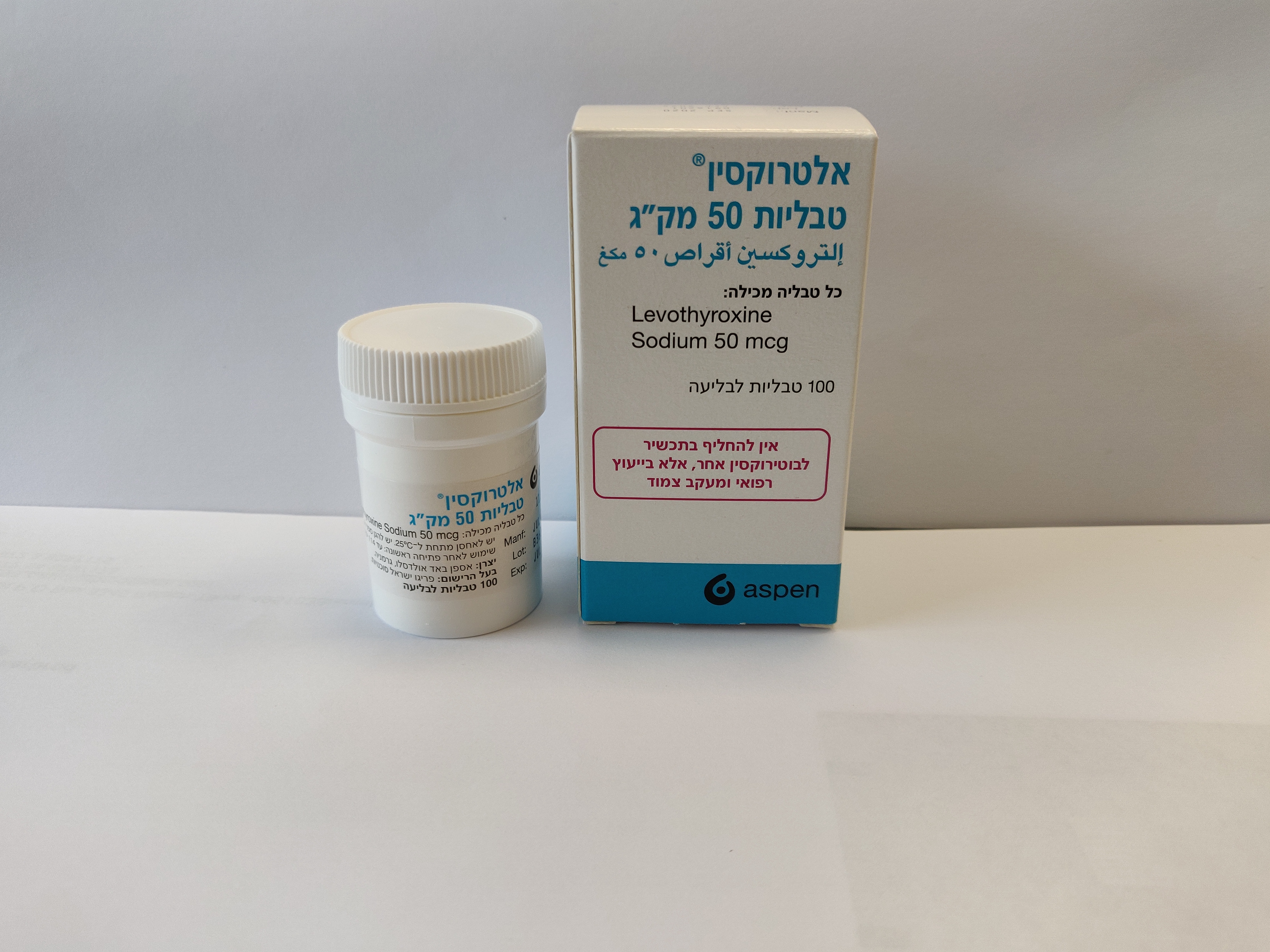Quest for the right Drug

אלטרוקסין טבליות 50 מק"ג ELTROXIN TABLETS 50 MCG (LEVOTHYROXINE SODIUM)
תרופה במרשם
תרופה בסל
נרקוטיקה
ציטוטוקסיקה
צורת מתן:
פומי : PER OS
צורת מינון:
טבליה : TABLETS
עלון לרופא
מינוניםPosology התוויות
Indications תופעות לוואי
Adverse reactions התוויות נגד
Contraindications אינטראקציות
Interactions מינון יתר
Overdose הריון/הנקה
Pregnancy & Lactation אוכלוסיות מיוחדות
Special populations תכונות פרמקולוגיות
Pharmacological properties מידע רוקחי
Pharmaceutical particulars אזהרת שימוש
Special Warning עלון לרופא
Physicians Leaflet
Pharmacological properties : תכונות פרמקולוגיות
Pharmacodynamic Properties
5.1 Pharmacodynamic properties Pharmacotherapeutic group: Thyroid hormones, ATC code: H 03 AA 01 Levothyroxine sodium is a monosodium salt of levothyroxine. Levothyroxine (T4) is a naturally occurring thyroid hormone which is converted to the more active hormone liothyronine (T3) in peripheral tissue. The precise mechanism for the conversion of T4 to T3, which takes place within the cell is unknown. The thyroid hormones are necessary for normal growth and development, particularly of the nervous system. They increase the resting metabolic rate for the whole organism and stimulate the heart, liver, kidneys and skeletal muscle. The thyroid hormones increase lipolysis and carbohydrate metabolism. The activity of 100 micrograms thyroxine corresponds to 20-30 micrograms liothyronine.
Pharmacokinetic Properties
5.2 Pharmacokinetic properties Absorption The absorption of levothyroxine is incomplete and variable, especially when taken with food. The absorption is increased during fasting conditions. Distribution Levothyroxine is almost completely protein bound. Biotransformation Metabolism primarily takes place by conversion to the active metabolite, liothyronine (T3). Both T3 and T4 are further degraded (by de-iodination) to inactive metabolites. Elimination Levothyroxine is eliminated slowly from the body with a half-life of approximately 7 days in healthy subjects. This may take place more rapidly in hyperthyroid patients, but in hypothyroid patients it may take even longer. Renal or hepatic disease does not appear to have any significant effect of the excretion of levothyroxine. Approximately 20-40% of levothyroxine is excreted in faeces and approximately 30-55% in urine.

שימוש לפי פנקס קופ''ח כללית 1994
Thyroid deficiency states
תאריך הכללה מקורי בסל
01/01/1995
הגבלות
תרופה שאושרה לשימוש כללי בקופ'ח
מידע נוסף
עלון מידע לצרכן
15.08.16 - עלון לצרכן אנגלית 25.05.22 - עלון לצרכן אנגלית 25.05.22 - עלון לצרכן עברית 15.08.16 - עלון לצרכן ערבית 25.05.22 - עלון לצרכן ערבית 23.08.23 - עלון לצרכן עברית 02.12.23 - עלון לצרכן עברית 06.12.23 - עלון לצרכן אנגלית 06.12.23 - עלון לצרכן ערבית 24.01.24 - עלון לצרכן עברית 13.03.24 - עלון לצרכן עברית 30.03.24 - עלון לצרכן אנגלית 30.03.24 - עלון לצרכן עברית 30.03.24 - עלון לצרכן ערבית 01.12.13 - החמרה לעלון 05.06.14 - החמרה לעלון 17.02.16 - החמרה לעלון 07.12.20 - החמרה לעלון 13.04.21 - החמרה לעלון 25.01.24 - החמרה לעלוןלתרופה במאגר משרד הבריאות
אלטרוקסין טבליות 50 מק"ג